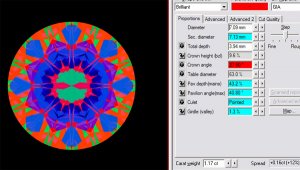clueless_in_boston
Rough_Rock
- Joined
- Jun 13, 2007
- Messages
- 17
How can GIA give this stone a good cut rating, when HCA advisor (and common sense) is saying stay away. Remember when all the stock analysts used to rate a stock neutral, that really meant to sell? lol.
Does GIA good really mean fair/poor? I am losing faith in GIA. Seems like there should be plenty of room for a new grading house to come along and replace them.
Does GIA good really mean fair/poor? I am losing faith in GIA. Seems like there should be plenty of room for a new grading house to come along and replace them.










300x240.png)